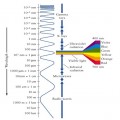 2012-09-26
2012-09-26
Light that is visible to human eyes is simply electromagnetic waves whose wavelength which happens to be in the perceptible range. The unit that we used commonly to measure the energy of light is watts and the quantities we used to describe a light’s characteristics are radiometric. How light is perceived by each one of us is varied, our eyes and brain can give a different perception of a similar light‘s color and brightness. We, the human, are typically responding to light with wavelengths from 380 nm to 780 nm. After the light signal is picked up by our eyes, it gets prett...
Continue reading →
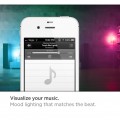 2012-09-18
2012-09-18
LIFX is a WiFi enabled, multi-color, energy efficient LED light bulb that you control with your iPhone or Android. What is LIFX? LIFX is the smartest light bulb you've ever experienced. It's a wifi-enabled, energy efficient, multi-colored bulb that you control with your iPhone or Android. LIFX gives you unprecedented control of your lights, reduces your energy costs, lasts up to 25 years and delivers an amazing range of experiences we think you’ll love. Sets up in Seconds LIFX is incredibly easy to set-up. Simply replace your existing bu...
Continue reading →
2012-09-17
By Scott Watson Light sources such as incandescent lamps, halogens, fluorescents, LEDs and some others have basic characteristics. They also have their positive and negative aspects. Actually, there are different kinds of light sources in use all over the world. None of them has actually proven to be very suitable for all applications. In this write-up, you’re going to learn more about the positive and negative aspects of the lighting sources. This will help you to get more understanding about LED lighting system. Let’s have a loo...
Continue reading →
2012-09-11
Energy-efficient light bulbs can be far from perfect. CFLs can take minutes to achieve full brightness compared with LEDs that brighten instantly, but in tests, one LED was dim and emitted a ghastly, bluish light color, and others couldn't cast light in all directions. Consumer Reports has identified four light bulb letdowns and ways to prevent them. Dim bulbs: Opt for more lumens. Check the lighting facts label on the packages of CFLs and LEDs for the number of lumens. The higher the lumens, the brighter the bulb. Weird light color: Choose the r...
Continue reading →
2012-09-05
In 2011, the National Development and Reform Commission announced that the ban on the sales of 100W and above incandescent bulbs would take effect in October 1, 2012. As the enforcement day is drawing near, LEDinside believes that now it has become the critical stage for the transition from conventional lighting to LED lighting. As the incandescent products are gradually phasing out and supportive policies of the SSL lighting industry are further introduced and implemented, LED lighting is faced up with a faster development than ever before. Over these years, with th...
Continue reading →
2012-09-04
1. Incandescents are dead. As manufacturers phase out traditional light bulbs that don't meet new federal standards for efficiency, the first to go are 100-watt bulbs in 2012. The phase-out continues with 75-watt bulbs in 2013 and 60-watt and 40-watt bulbs in 2014. You could substitute halogens or compact fluorescents CFLs, but LEDs will take you straight into the future of lighting. LEDs have been used in flashlights and reading lights for years. 2. Long live LEDs. Well-designed and -manufactured LED bulbs are rated to last 25,000 hours, or at least 22 yea...
Continue reading →
2012-08-23
By Scott Watson In the electronic world, there are varieties of bulbs in use. Among the popularly used types include fluorescents tubes, LEDs, incandescent lamps, halogens, HIDs and some others. These bulbs showcase in a variety of shapes and designs. A clear understanding of the shapes of the bulbs will go a long way to assisting you in understanding their basic features and modes of operation. Let’s take a look at the various bulb shapes. Pear Shape This is the most standard type of bulb shape available in the wor...
Continue reading →
2012-08-22
The history of lighting is quite detailed and long. Lighting systems and sources have actually come a long way. If you must understand the practical aspects of LEDs and other lighting sources, it’s necessary you grab some details about their long history. All the lighting sources and systems in use today didn’t fall from above. Some individuals somewhere invested their time and energy in invention them. An attempt is made in this write-up to present a brief history of how the issue of lighting began in our world. The very first pra...
Continue reading →
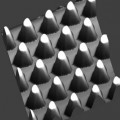 2012-08-17
2012-08-17
LEDs have a very bright future. According to a market research report published by Strategies Unlimited (SU), the high-brightness (HB) LED market, experienced a 93 percent growth rate between 2009 and 2010. In 2009, the global market for packaged HB LEDs was $5.6 billion. In 2010, it grew to $10.8 billion. SU is predicting that by 2015 the global market will be worth $18.9 billion, representing a compound annual growth rate (CAGR) of 11.8 percent. Despite the positive forecast, there is one element that has the potential to stifle the growth of the LED mar...
Continue reading →
2012-08-15
Since the invention of light by the famous scientist, Edison, several improvements have been made in the area of lighting. Several lighting sources and systems have been invented. Edison gave the world the very first incandescent bulb after he made several attempts. His invention saw the world depart from the use of candles and kerosene lamps. His invention also awakened the giants in the minds of many other scientists. Several variations of incandescent light bulbs were invented after that...
Continue reading →
2012-08-14
Ever since the world came to be, light has always remained a very vital part of the universe. Without light, darkness will simply rule the world. The power of light cannot be ignored in any sector of life. The Sunlight and the moonlight have great impact in our world. The same scenario holds for electric light. We can’t do without incandescent bulbs, fluorescent tubes, LEDs, halogens and other light sources. In this write-up, the practical aspects of electric lighting systems and sources are discussed. By way of simple defi...
Continue reading →
2012-08-03
Since their introduction in early 2000s, Light emitting diodes (LEDs) have continued to cause waves in the electric industry. They are widely known for their uniqueness in generating light in diverse manners. The LEDs do have practical characteristics. Getting to know more about that will help you appreciate their function in the electric world. In this write-up, an attempt is therefore made in discussing the basic practical characteristics of LEDs. LEDs are current devices LEDs are never voltage devices as some people may t...
Continue reading →
2012-08-03
Temperature has tremendous effects on LEDs. This is very evident from the practical thermal behavior seen in the devices. In any case, there’s a need to discuss how to manage the thermal effects in order to make the most out of the LEDs. This is exactly the subject matter of this discourse. There’s a need to look at the analytical method used in calculating the thermal effects as well the thermal environment in which the LEDs operate in. we’re also going to discuss the various methods of keeping the LEDs...
Continue reading →
2012-08-02
All LEDs are driven electrically before they can emit quality light. This is one of their basic characteristics which differentiate them from other kinds of light sources. In this write-up, we’re going to be focusing on the DC drive circuitry for LEDs. In the first place, the battery is a typical DC source. It’s usually used for flashlights. It can as well serve as the output of a converter. Actually, DC is quite different from AC. The difference is that DC has much lower voltage than AC. Hence, the regulations gov...
Continue reading →
2012-08-01
LEDs have their basic characteristics. They are current devices with unique functions. They also have unique system of operation when they are in use. A look at their practical thermal performance is very vital if you must understand how they operate. This is exactly the major goal of this write-up. We’re going to be examining the practical thermal performance of LEDs and how it influences their usage in given applications. The Mechanisms behind Thermal Shifts A White LED usually consists of different components. I...
Continue reading →
2012-07-30
By Scott Watson LEDs have continued to evolve as the years roll by. Lots of exciting designs have been seen in many of them. The future promises to be more surprising when it comes to LED designs. In this write-up, we’re going to be examining the future design possibilities expected of the next generation LEDs. Actually, brighter and cheaper LEDs do come up every few months. All kinds of modern day designing processes are used in manufacturing them. So many manufacturers have come into the business. Today, many of our ligh...
Continue reading →
2012-07-27
By Scott Watson Apart from using the DC drive circuitry in some conditions, LEDs also make use of the AC Drive Circuitry. DC circuitry is powered by batteries while the AC is powered by the electrical current. In this write-up, we’re going to be discussing some details concerning the practical aspects of AC drive circuitry meant for LEDs. Actually, when your LED light is run off the electrical grid, the AC drive circuitry is simply used. The power conversion of the AC power is known to be very complex than the DC version. ...
Continue reading →
2012-07-26
What is LED? LED stands for Light-emitting diode, first used in 1968. LED, a semiconductor light source, has been widely adopting for assorted lighting usages and has been slowly replacing incandescent lights over the recent years. Although LED is much more environmental-friendly than traditional lighting fixtures, reusing and recycling LEDs is still a very crucial issue. LED’s Advantages and Applications LED lights have the following edges over incandescent light bulbs: A) LEDs have longer lifespan than that of incandescent light bulbs; the for...
Continue reading →
2012-07-26
By Scott Watson
Lighting designs are made up of various components such as LEDs, ballasts, drivers, thermal performance and a lot more. In most cases, these components have to be integrated to make a complete design. The LEDs in particular have vital roles to play. A look at the practical system design with LEDs is therefore very important.
A printed circuit board can be made for the LEDs. There’s also the need to design optics in order to get the light from the LEDs to go to the appropriate direction and also have the right characteristi...
Continue reading →
2012-07-24
By Scott Watson
The word “LED” is a short form for “Light Emitting Diode”. Simply puts, LEDs are tiny diodes that conduct current only in one direction. There are lots of practical aspects you can learn about LEDs. They are actually wonderful electrical devices that can accomplish a lot when put into use. You can also learn a lot from their electrical behaviors.
LEDs are actually known for having higher voltages than the ordinary diodes found in electronics. This is mainly because; they are not made of silicon element. T...
Continue reading →
2012-07-24
By Scott Watson
Light emitting diodes (LEDs) have continued to be greatly used in the electronic world. There’s a lot you need to know about their designs and functions. They have continued to be used in the manufacturing of gadgets, mobile devices and other tiny and large electronics. To know more about the LEDs there’s a need to unravel their interior components. This is exactly the major focus of this write-up.
Getting to know the inside sections of LEDs can be very educating. The interior construction of such devises is worth k...
Continue reading →
2012-07-24
By Scott Watson To understand more about the LEDs lighting designs, there’s a need to dig into the background aspect of light bulbs and lighting systems. For more than 100 years now, light bulbs have been in use all over the world. Such bulbs have undergone series of changes through the ingenuity of several scientists across the world. The technology of the light bulbs and lighting systems has always improved from one level to the other. Basically, the whole scenario about light bulbs can be unders...
Continue reading →
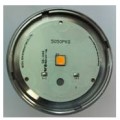 2012-07-16
2012-07-16
In July 2012, Seoul Semiconductor (SSC) announces a new LED product called “nPola,” which takes SSC more than ten years to develop. The product features the non-polar technology that increases brightness levels 5 times over existing LEDs. Currently most mass-produced LEDs’ luminous efficacies are around 100lm, but SSC’s nPola product’s luminous efficacy reaching 500lm, five times higher. Simply put, a 60W equivalent LED light bulb usually requires 10-20 LEDs, but it only needs 1-2 LEDs if adopting nPola product. According t...
Continue reading →
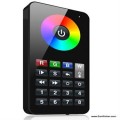 2012-06-29
2012-06-29
1.Brief introduction SR-2818 RGBW remote controller is full touch remote controller which has 8 different zones. It can get Red/ Green/ Blue/ White color directly. The remote controller can save up to 8 colors or 8 modes into corresponding buttons (1-8 buttons) for each zone. You can choose any color through color wheel. There is a USB port to charge internal battery....
Continue reading →
2012-06-29
By Scott Patterson Light bulbs are seemed everywhere, and there are more than 20 billion light bulbs around the world right now. On an average that for every one person, there would be three light bulbs. In the future, we can expect a replacement of all the current lightbulbs with those of LEDs. The reason for the occurrence of this replacement is due to the fact that LEDs’ efficacy is multiple times higher than those of incandescent light bulbs. LED is possible in reproduce the theoretical limit of the conversion from electricity to light set by physics. LEDinsid...
Continue reading →
2012-03-13
By Scott Patterson The U.S. Department of Energy while facing the conundrum of current economy downturn, tries to fortify the nation’s energy security and reduces carbon emissions, the solution that it has came up with is the implementation of solid-state lighting technology. DOE believes this emerging technology will be America’s answer to these three recent challenges. Solid State lighting will bring a greener environment because homes and businesses will be consuming less electricity and thus they will be less dependent of fossil fuels. Solid-state lightin...
Continue reading →
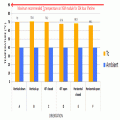 2012-03-08
2012-03-08
by Dr Aboudé Haddad, Director of Engineering, FrigoDynamics® Europe Ltd Introduction Conventional light sources have always been able to release heat to the ambient through infrared radiation, and convection in the case of Fluorescent. This mode of heat transfer typically does not require advanced cooling methods to facilitate the process. LED sources however lose heat through conduction, which requires the additional knowledge of how to carry waste heat out of the LED efficiently in order to prevent system failure. An overview of the different...
Continue reading →
2012-03-05
As we know, LED is a popular light source with eco-friendly features. And with the rapid development of the agriculture and horticultural industry, the demand to improve the crop output is soaring. People begin to think of securing steady agricultural harvests with plant factories, and LED is gradually to be available in the horticultural sector.
Generally, the sunlight has played a key role in promoting plants growth under the photosynthesis. And LED grow light has created huge business opportunities. Research has shown that the wavelength of LED grow light is good f...
Continue reading →
2012-03-05
By Tim Lenahan LED lights are starting to replace lights used in places like salons, amusement parks, and even courthouses. LED lighting is a major trend either in households or for architectural purposes. Some of the most prevalent decorative lightings include street bulbs, light strips, rope lights, floor lights and spotlights. Of course you will soon have a string of Christmas LED light lying somewhere in your house. People who are thinking of becoming a house owner, it is important for them to decide the details of the house they want from a enormous pool of choices...
Continue reading →
2012-03-05
By Scott Patterson By utilizing LED light bulbs, you are not only going green. There are actually a lot more benefits concerning this conversion. Two of the main reasons help people to decide going green are tax break and helping the environment. LED lights will not only be helping our environment but in the long run, it is going to be able to save us a lot of cash on the electric bill because they consumes a lot less electricity. LEDinside observed LED lights in finding their parts in every aspect of residential home, that been said is to include outside spaces with ...
Continue reading →
 2012-09-26
2012-09-26
 2012-09-18
2012-09-18
 2012-08-17
2012-08-17
 2012-07-16
2012-07-16
 2012-06-29
2012-06-29
 2012-03-08
2012-03-08